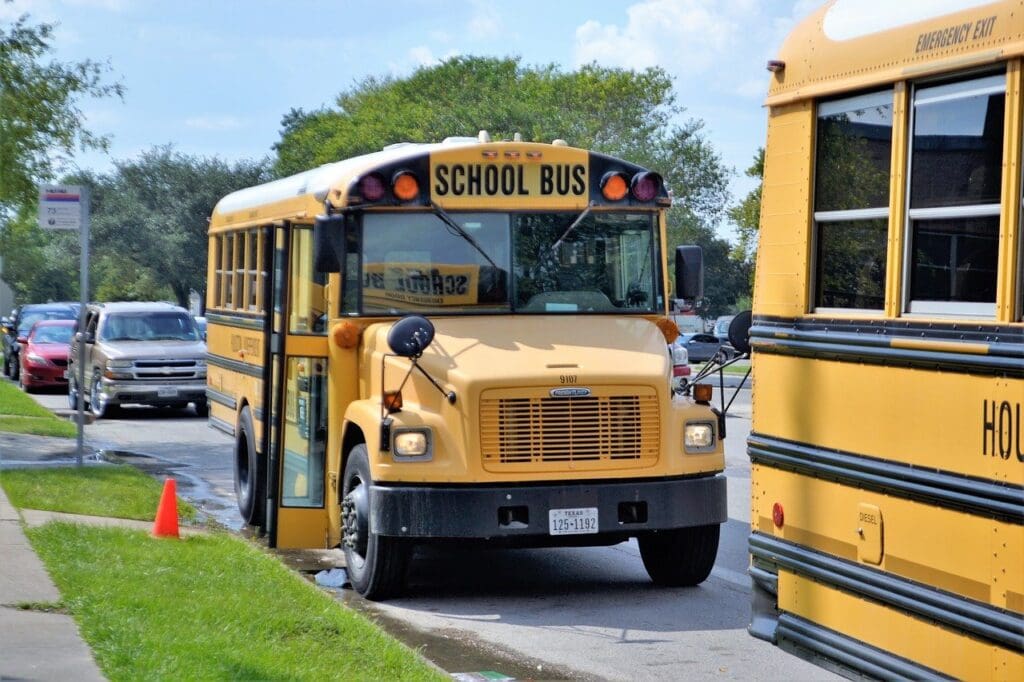The stimulus checks for the general American public allowed an echo of relief for all recipients. With businesses shut down and unemployment continuing to be an issue for many, the much-needed stimulus checks offered a bit of relief.
Congress has passed the $1.9 trillion Biden American Rescue Plan under the FY21 Budget Reconciliation process. $165 billion in education emergency funding has been included in the new recovery package, with $122.8 billion for K-12 public schools. $39.6 billion will be given for higher education, and $2.75 billion will go to private schools.
Another $800 million of the K-12 funds are reserved by the Secretary for homeless children and youth to provide school-based and wrap-around services and assist in their full participation in school activities. This is in addition to $2.58 billion that will be appropriated for IDEA Part B formula grants to support students with special needs. Special needs students will also receive $200 million for IDEA preschool grants and $250 million for IDEA infants and toddlers grants. To support Native Hawaiian and Alaska Native education and special projects, $190 million is appropriated ESEA Title VI.
With this extra funding, Dr. Shawn Joseph discusses his insights on areas where strategic spending will improve American children’s better outcomes. Dr. Joseph, a former superintendent in Delaware and Tennessee and the Co-Director of the Urban Superintendent Academy at Howard University, shared, “This can’t be like the 1985 movie Brewster’s Millions”. In the movie, the main character, Montgomery Brewster, played by Richard Pryor, must spend $30 million in thirty days to receive $300 million. Dr. Joseph continued, “This is an opportunity that the nation must not squander. We can turn crisis into triumph by targeting dollars in key areas.”

Investing in Educators and Administrators
A recently released February 2021 study funded by the Wallace Foundation found that “the effective principal’s impact is stronger and broader than previously thought, making it ‘difficult to envision’ a higher return on investment in K-12 education than the cultivation of high-quality school leadership.”
Improving teacher and school leader efficiency should be one focus for school districts. Dr. Joseph shared, “Over the last few decades, many school boards have chosen to redirect funding directly to schools by dis-investing in professional development of staff, including teachers and principals. This is a grave mistake. The quality of teachers and principals matter, and at this time, we need universities, alternative certification programs, school districts, community leaders, and state departments of education working together to focus on improving the pipelines of exceptional teachers and school leaders.”
Universal Pre-K
High-quality early childhood educational experiences from birth to age 3 are critical for children to learn literacy and mathematical foundations and develop positive values and socio-emotional learning. Unfortunately, school districts still have limited local investments in high-quality early learning experiences that such at universal Pre-K. Dr. Joseph states, “Every dollar invested in children in their formative years brings a tremendous return on investment—as much as $4 to $9 of return for every $1 invested according to the National Forum on Early Childhood Policy and Programs.
According to the Campaign for Grade-Level Reading, there must be a collaboration among early childhood centers, nonprofit organizations, in-home childcare providers, and the government sector to invest in the young formative years of students.
Many parents, caregivers, and children can benefit from a universal Pre-K program that focuses on a structured curriculum that will prepare them for K-12 competency. For so long, parents have been left to their own devices during the pre-K years, resulting in low-quality babysitting, which leaves many students unprepared to enter school with language deficits and challenges adjusting to school settings. Dr. Joseph shares, “This is the moment in America where we can finally explore investing in a root cause to academic failure—poor early learning experiences.
Providing Broadband Access for Digital Education
The dramatic shift from in-person schooling towards distance learning highlights the need for quality internet access among students throughout America. Dr. Shawn Joseph explains that many underprivileged families and households do not have fast internet access that provides a means to:
- Use high-bandwidth content: Videos with a large file capacity, audio files, and other documents that have a higher-quality may not be accessible to students who do not have broadband internet access.
- Live video calls: Stable internet connection is essential for students who take live online classes. Discussions, as well as learning, are disrupted when the internet connection is not ideal.
- Digital requirements: Online quizzes, projects, and other requirements passed digitally can often turn problematic when the connection is cut during the process of submission.
A stable internet connection should not be a privilege but a digital right for the 21st-century learner.
Effective Tutoring for Literacy and Mathematics

Another point of focus should be high-dosage tutoring in literacy and mathematics. Middle-class families and affluent families have always had access to tutoring services and additional private supports. Dr. Joseph declared, “High-quality tutoring is one of the inequities that has always existed, but with the advent of adaptive technology, high-quality tutoring is now affordable for every child in America.” Research is clear that school districts cannot only focus on remediation as Black and Brown children are consistently tracked into low-level activities and do not receive the opportunity to be exposed to rigorous curricula. However, the pandemic has had a significant effect on both students, families, and teachers’ emotional needs. Dr. Joseph notes, “We can’t expect teachers to be super-heroes and expect them to work through the summer in traditional summer schools or simply make their workdays longer. Now is the time to leverage technology and community assets to triple down on intensive, scalable, research-based tutoring approaches. One company that is doing this in reading is BookNook Learning. Its Founder, Michael Lombardo, is the former CEO of Reading Partners. This nonprofit organization empowers community volunteers to provide one-on-one reading support to below-grade-level elementary school readers. Michael is committed to using the Science of Reading and technology to equalize children’s playing field throughout the world. “Rich kids shouldn’t be the only kids to get exceptional tutoring. Our technology allows anyone to implement reading supports based upon the best available Science in Reading. We are the only technology company in America that uses equity-based pricing. Our goal is to make a difference, not money. Our results speak for themselves.” A look at Book Nook Learning’s most recent data, which allows communities to galvanize volunteers to provide exceptional reading support, shows students can mitigate learning loss in reading with the proper curriculum and a caring adult. You can hear this discussion on the Impact Driver’s Podcast.
Socio-Emotional Learning Through Hands-On Experiences
Many figures criticize the educational system for not fostering independent learning and integrating real-life experiences. Over the past two decades, we have hyper-focused on academics and have not done a good job of balancing children’s socio-emotional needs. Anxiety and depression continue to be on the rise in American schools, resulting from the lack of investment in the whole child.
Thus, Dr. Shawn Joseph suggests that districts emphasize portions of funding to increase applied learning experiences that foster critical thinking, the use of technology, and more collaborative, real-life learning experiences. This means collaborating within the community to teach subjects on financial literacy, sciences, arts, technology, engineering, and math. Local chambers of commerce, philanthropy, and mayor’s offices are critical in supporting school districts with redefining possibilities and opportunities for children. New Superintendent of East Baton Rouge School District, Dr. Sito Narcisse, within his first 100 days of school, has declared that his goal is to collaborate with his mayor’s office, the local business community, local universities, and his community colleges to dramatically expand the number of students earning college credits while in high school in East Baton Rouge School District. Dr. Narcisse states, “As a first generation American of Haitian decent, it was a game-changer for me to be exposed to people who look like me on college campuses. In East Baton Rouge, we are going to let all of our kids know that they will have the skills and abilities to pursue their dreams by creating new opportunities for every child in this district.” Dr. Narcisse’s transition report and his upcoming strategic plan that is being collaboratively developed with his school board will offer a vision of education that prioritizes children’s social, emotional needs and exceptional hands-on learning experiences.
Educational Stimulus: To Stimulate Student Learning
The ultimate purpose of having an educational stimulus is to mitigate learning loss and reimagine how we educate children, particularly historically marginalized children. By empowering educators, government leaders, and communities to make needed strategic investments, we will avoid this Brewster’s Million’s moment, potentially wasting billions of dollars, leaving our most vulnerable children with limited options. As Dr. Martin Luther King Jr. once shared, “Now is the time for America to make a moral and financial investment in our children to eradicate racism and economic depravity.” We cannot eliminate one without eliminating the other.
Featured Image by AzamKamolov from Pixabay










